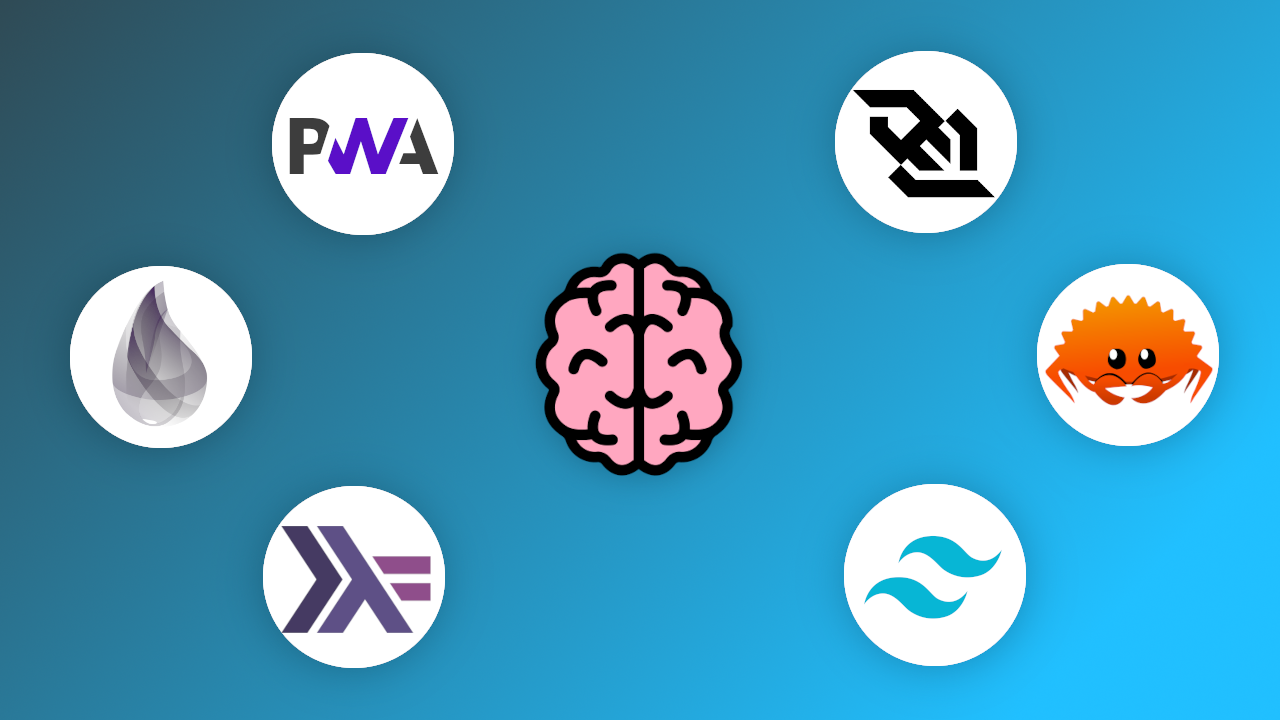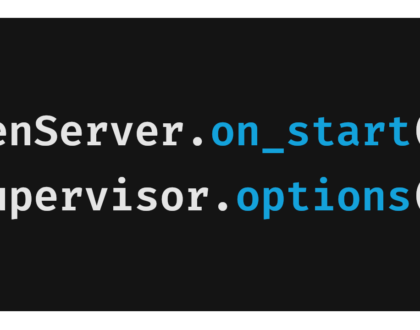🎓 Technology I’m Learning in 2022

I’m quite a bit late to setting my goals for the year. Yikes, March arrived so quickly. I wanted to take some time to put on paper (digital paper) what technologies I’m wanting to explore this year. Although I already shared some habits I’m working on, I didn’t really cover anything I want to accomplish in software. So for this post, I will be sharing a comprehensive list of every technology that I’m wanting to learn this year. I don’t believe that I’ll be able to accomplish every item on the list, because it may be too much. But I would rather be hopeful.
I’m going to break each technology down into categories that I think make the most sense and share each technology within them. I will also share my motivation for learning them and maybe some ways I’ll go about using them in projects. If you want to follow my learning on any of this, I keep most of my repos public on my GitHub. Lastly, these aren’t in any order, other than the categories I thought to group them in. Languages felt like a natural place to start, followed by web technologies, and ending with tools and miscellaneous items.
🤬 Language Technology
The first type of technology that I want to add to my repertoire is languages. Since I started programming, I’ve had the opportunity to use a lot of great languages, spending most of my time with: JavaScript, PHP, Elixir, Elm, C#, and other web languages (HTML, CSS, etc). Because I have spent a lot of time in the front-end in the last two years, I would like to focus my attention on more application or back-end technologies.
🧪 Elixir
This one is a bit of an oddball. I actually started learning Elixir back in 2020 and am using it in my full-time position at InfluxData/InfluxDB. In this time it has quickly become one of my favorite languages to use. If you aren’t already familiar, Elixir is a language built on top of the Erlang language and its VM, BEAM. Elixir is a functional programming language, which helps to write more reliable code because all functions are pure and data is immutable. I’ve also had the opportunity to build some apps that were able to process a large amount of data concurrently because of Elixir’s processes. I really can’t say enough about how awesome of a language it is. On top of that, it just has a nice syntax.
I’m putting it on the list because I still feel like I have a lot to learn in terms of architecting an application and using the common libraries for the language. This year I would like to spend some more time with the Phoenix framework and build some applications using Phoenix’s LiveView. I think LiveView has a good shot of replacing JavaScript in some applications, so I would love to get my hands on it.
⚙️ Rust
I first heard about Rust from a blog post by Discord. I honestly don’t know that much about Rust, considering how much I’ve heard about it. The ecosystem and dev tooling appear to be excellent. But mostly, I have heard that the compiler is extremely helpful and friendly. I’ve become accustomed to the errors provided by the Elm compiler; getting that on the backend sounds great. It’s not a functional language, but it does promise reliability through a strict type system and memory management.
I’ll likely try Rust on a web project first. It is supposed to have good WASM support, so I’ll definitely try a project with that. After that, I’d like to give it a go with a hardware project. In college, I studied Electrical & Computer Engineering, and I’ve had an itch to apply some of that knowledge to something physical. At this point, I think I’ll create a device for performing music. I may give a go at writing rust for Arduino. Honestly, a better language that worked well with lower-level and hardware technology would be nice.
ƛ Haskell
Haskell is a bit of a stretch goal. But, since I love Elm so much, it seems natural to learn the language the compiler is written in. Haskell is a statically-typed, functional language. No other language gives me the confidence in deployment like Elm does. And I’m hoping Haskell will give me the same confidence because it also makes you handle all side-effects.
I would like to try a Haskell web project, which will mostly likely be a game. I anticipate it working extremely well for an event-driven game. Elm will almost certainly be the front-end. I think its animation support is incredible. So we’ll see how this one goes. It’s a wishlist thing to learn, so fingers-crossed, I’ll be able to learn it. 🤞
🌏 Web Technology
This next category has two web technologies that I’ve dipped my toes in, but haven’t had the opportunity to use in a real application. I work as a software engineer, and have been deeply involved in web development for more than decade. I’m neglecting WASM from this list of technology, because I don’t plan on investing a lot of time into that, specifically. However, I think it’s likely that I’ll use it while working with Phoenix, Haskell, and maybe Rust.
🔌 Websockets
Websockets are the future. Or so I’ve been told 😜. Websockets, if you’re not already familiar, break the HTTP request/response lifecycle by allowing two-way communication. With websockets, messages can now be sent from the from the server to the client and handled in a callback. I’ve had the opportunity to use them in some experiments. But I’ve never used them in a production application.
I’m hoping to get some experience using Websockets this year. I’ll most likely be using Phoenix Sockets in Elixir, since that’s where I’ll be spending the bulk of my time. I think an interesting app to develop would be something with a shopping cart, so that I can send pricing updates to the clients. Alternatively, I might look into a chat application. I do think they would be a valuable tool to get some experience with, so if you have any ideas, please let me know!
📱 Progressive Web Apps (PWAs)
Progressive Web Apps (PWA) are a really cool technology. I used them for the first time in 2021 after hearing a talk by lemon at a conference. Until then, I hadn’t realized how far browser support had come. My coworker and I went back to our hotel room and immediately gave a go at converting an existing website to a PWA. It proved to be fairly easy to get past the initial steps. We quickly made a web app installable and to include some assets to be cached locally.
This yeah, I’m hoping to get to develop an app into a PWA with more extensive features. The primary feature I want to get experience with is queuing updates to be sent to the server while offline. I haven’t done a lot of state management with IndexedDB, but I’m going to want to figure that out quickly.
At one point, my personal website was a PWA and I’m going to try to get that back to being one. I have another blog where I talk about Tacos and it’s PWA written in Elm. I would like to update some features on that blog to work better for offline (like comments). If I do get the opportunity to work on a game, I might see about getting it published on the Microsoft Store and/or Google Play.
🛠 Tools & Misc Technology
This is a bit of a bucket of the other things i want to learn. I will probably learn both of these while working on another skill. And with any luck, I’ll be able to use some of them as part of my job.
💄 Tailwind CSS
Back in the day, I just had CSS. After a while, I finally got SASS, which felt like a miracle. I come from the old days of floating elements and praying. Honestly, although I’ve become familiar with the new features in CSS as they appear, I haven’t picked up any new CSS tooling since SASS. I have tried bootstrap a few times throughout the years, but it never really stuck. It seems like Tailwind has been generating a lot of buzz and I think their website is pretty. And having a pretty website can get me to do just about anything.
Tailwind CSS will likely find its way into one of my projects while learning another language. I think if I make a fun app or static website to learn Rust or Phoenix LiveView, I could pop it in. I’m somewhat hopeful that I’ll fall for it with all of my heart. But even if not, I might just get some inspiration in design.
⏱ InfluxDB + Telegraf
This probably deserves to be a bit higher on this list. My employer, InfluxData, develops the leading time-series database. A time-series database (TSDB) is a database purpose-built for timestamped data. We have a cool page about it here, if you want to learn more. I work on the E-Commerce team, so I don’t spend time with InfluxDB for work. However, I have a project idea involving my thermostat that will require a lot of timestamped data. While I probably could get by with a SQL or JSON db, I think a TSDB is serves analytics-style data really well.
InfluxData also develops the open source project Telegraf. Telegraf works as an ingest for a TSDB. Telegraf can even be used with other TSDBs, other than InfluxDB. I’ve actually had the opportunity to work with it once, and I found the experience to be really easy. I was able to authentication against an OAuth API, refresh the token, and pull data all with a single config file. It’s pretty sick!
🎓 Learning Technology Conclusion
Wish me luck! Again, I don’t believe I’ll be able to learn all of these, but I’m hoping to at least learn more about each of them. I imagine that new technologies and tools will present themselves as I continue learning. If something useful presents itself, I’ll work on that, of course.
Thanks so much for reading! Again, you can follow my learning over on my GitHub and sometimes on my twitter, @abshierjoel!
– Joel Abshier
Recommended Posts
🎉 2022: Habit Building Goals
February 12, 2022

😲 Elixir’s Public Types for GenServer/Supervisor
February 4, 2022
🌊 A Realworld Introduction to Elixir Flow
January 29, 2022



